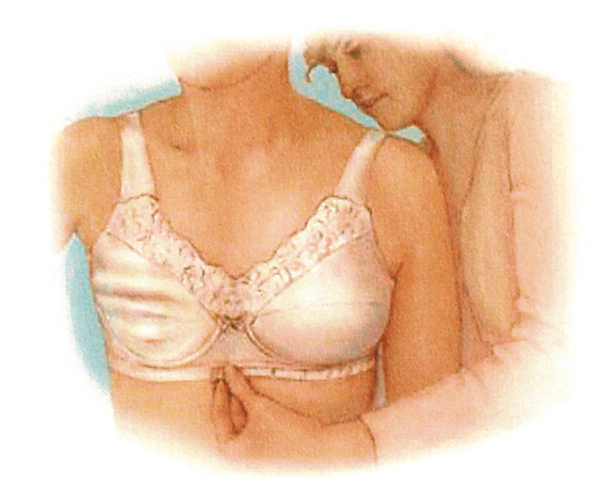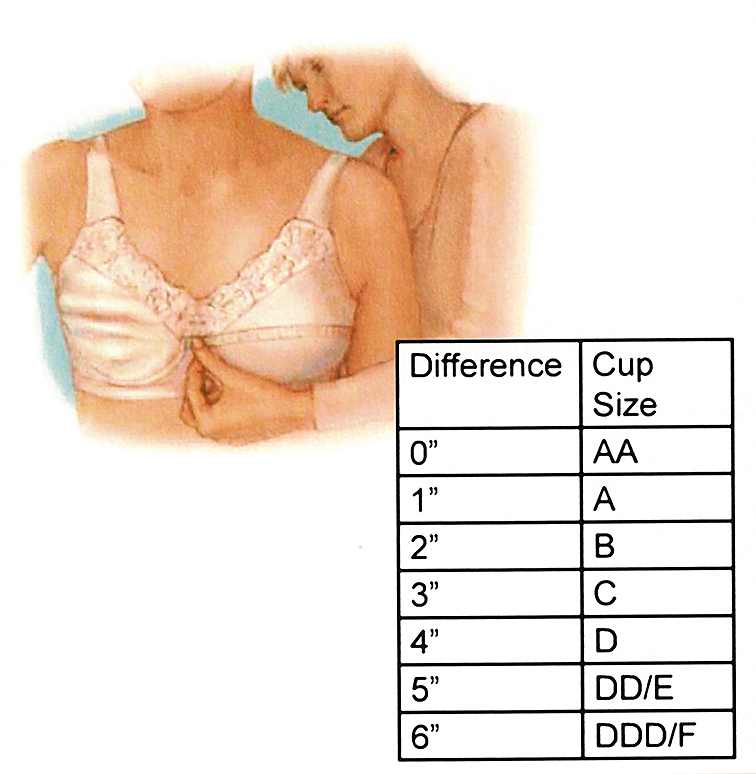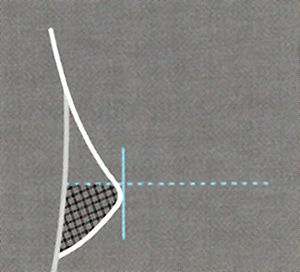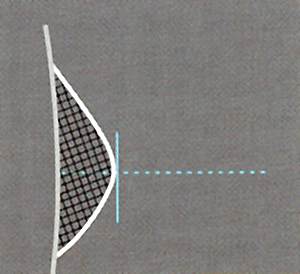-
Your shopping cart is empty!
Remember, a breast form is only as good as the bra that carries it. It is important to choose a bra style that will adequately support the weight of your breast form and hold it securely against your body. After breast surgery, we always recommend being professionally fitted for your bra and breast form. However, as your body changes so does your bra size, so you should check your measurements from time to time, particularly following weight loss or gain. Here's how to do it:
To find your BRA SIZE, measure all around the body, underneath the bust.

If the measurement is an EVEN number add 4 inches, e.g. 30" + 4" = 34" Bra Size. If this measurement is an ODD number, add 5 inches, e.g. 29" + 5" = 34". This final measurement is the Bra Size.
Measure over the fullest part of the remaining breast, from the center of the spine to the center of the sternum. Multiply this measurement by two ( e.g. measurement of 18" x 2 = 36" )

The difference between the first measurement (bra) and the second (cup) determines the Cup Size. See Chart Above.
 | ShallowThe breast tissue drapes in the lower cup of the bra and is often seen on the mature woman with soft breast tissue. The shallow profile woman requires a bra with a large bottom cup and small upper cup. |
 | AverageThere is an equal amount of breast tissue on the top and bottom of the breast, with a more round appearance in the upper cup area. The average profile woman usually has firm breast tissue and a round profile. |
 | FullHas the most round appearance. The full profile woman requires a bra that provides not only bottom cup support but also support and coverage for the upper part of the breast. The full profile can also be broad without much projection, needing a bra that provides containment such as M-frame styles that separate and support beautifully. |